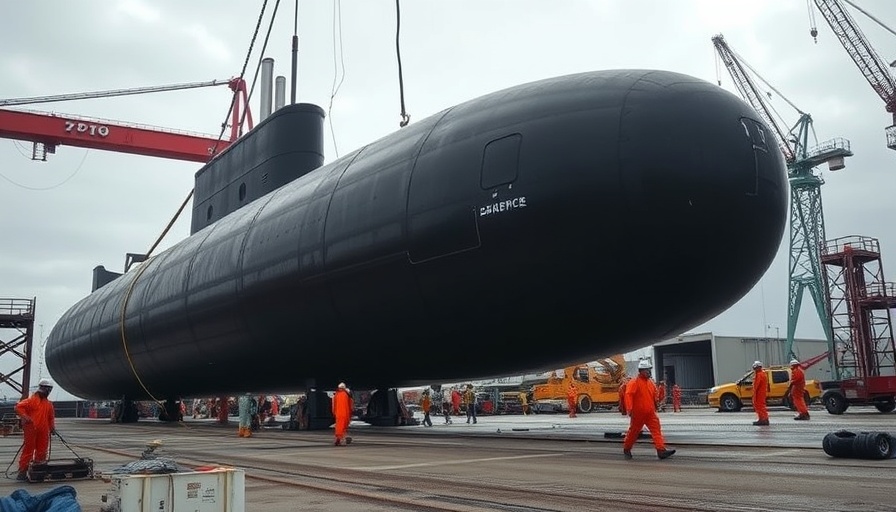
New Era for Submarine Disposal in the UK
Babcock International Group is making waves in the maritime industry by demonstrating innovative disposal methods for the UK's aging submarines. The first significant step is the dismantling of HMS Swiftsure, a nuclear-powered attack submarine that served the Royal Navy for decades. Scheduled for complete dismantlement by the end of 2026, Swiftsure marks a major milestone in the reduction of the UK's legacy naval assets.
A Sustainable Approach to Disposal
HMS Swiftsure, having been commissioned in 1972, is now over 50 years old and was decommissioned in 1992. The removal of its fin at Babcock's facility in Rosyth, Scotland, is less about the end and more about rebirth. Babcock estimates that around 90% of the submarine's total weight will be recycled, with a notable portion of high-quality steel repurposed for future submarines in the Royal Navy. This focus on recycling not only demonstrates environmental responsibility but also strategic foresight in resource management.
Public Engagement and Safety
The disposal approach reflects the Ministry of Defence’s commitment to transparency and public safety, supported by feedback from two public consultations held in 2012 and 2015. Lorraine Russell, a senior owner responsible for the Submarine Disposals Programme, emphasized this commitment by stating, "By recycling materials wherever possible, we’re ensuring these vessels that served the nation so well continue to provide value even after decommissioning.” This dedication to responsible practices can help build public trust in the nuclear operations of the Defence Nuclear Enterprise.
Impending Challenges and Future Predictions
With the UK government planning to procure up to 12 AUKUS-class submarines by the 2030s as outlined in the recent Strategic Defence Review, the timing of this disposal initiative is crucial. The Royal Navy's current fleet encompasses five Astute-class submarines, soon to be seven. This growing fleet size demands a robust lifecycle management plan, especially regarding the effective dismantling of retired vessels. The strategies implemented during the Swiftsure project will set a precedent for the 26 other decommissioned submarines still waiting for dismantling at various naval bases across the UK.
Lessons from Disposal and Lifecycle Management
Babcock's disassembly of HMS Swiftsure will serve as a test case for future operations involving other decommissioned Royal Navy submarines. Since 1983, these submarines have been left defueled and stored afloat at sites like Rosyth and Devonport, while only seven boats at Rosyth have been defueled to date. As the navy prepares to manage a fleet larger than it has operated in decades, insights gained from the Swiftsure project could be invaluable, pushing forward necessary advancements in maritime technology and industry processes.
Conclusion: The Future of Maritime Disposal
The successful decommissioning and recycling of HMS Swiftsure represent an important development in the UK’s approach to maritime disposal. As Babcock forges ahead with this project, it highlights how important it is for naval operations to keep pace with technological advancements and environmental considerations. Engaging in practices that exemplify sustainable disposal can offer insights that resonate beyond the military, influencing industries worldwide to adopt similar practices as part of their operational strategies.
As we look to the future of submarine manufacturing and decommissioning, understanding the implications of these changes can provide a clearer picture of the industry’s direction. Continuous innovation and engagement with environmentally sustainable methods will be paramount for the UK and other nations navigating the complexities of modern maritime defense.
 Add Row
Add Row  Add
Add 




 Add Row
Add Row  Add
Add 

Write A Comment